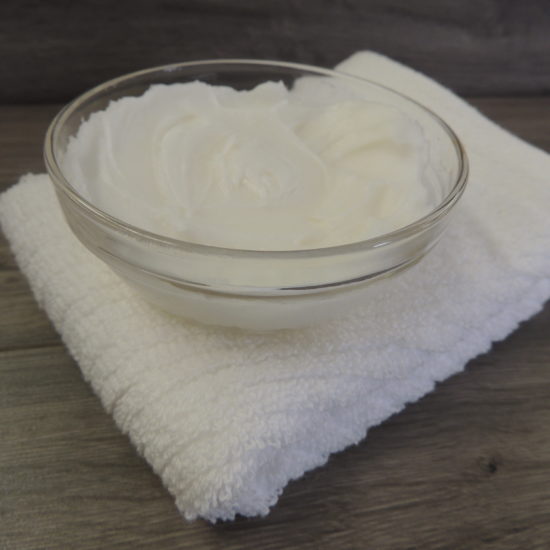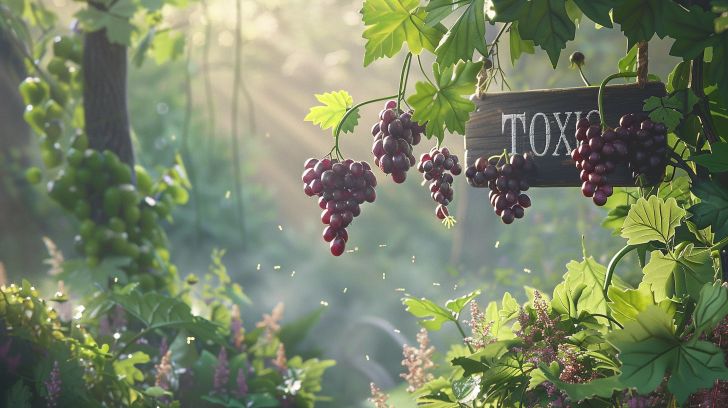
In any survival situation, finding food becomes a top priority. While you may have emergency supplies stored away, these stockpiles might not always be accessible during a crisis. When conventional food sources are unavailable, foraging for wild edibles could become your lifeline.
Most forested areas are abundant with edible plants that can sustain you until you reach safety. However, this natural bounty comes with a potentially deadly risk: many toxic plants closely resemble their edible counterparts. The ability to distinguish between safe and poisonous plants isn’t just a useful skill—it could determine whether you survive or perish in the wilderness.
Below are five deadly plants you must avoid when foraging in the wild. Learning to identify these toxic species could save your life when you’re forced to live off the land.
1. Moonseed
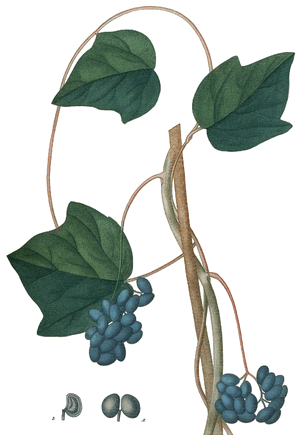
White or yellowish flower clusters may appear along the non-woody stems, reaching up to 5 inches in length. These flowers bloom from late spring to early summer, lasting approximately two weeks.
Female flowers develop into small berries by late summer or early fall, closely resembling wild grapes—which creates a dangerous situation for foragers.
Native to North America and particularly common in Illinois, this low-lying vine contains the highly toxic alkaloid dauricine throughout all parts of the plant. Ingestion can cause convulsions and death.
Fortunately, the berries have an unpleasant taste that often warns foragers away. However, because Moonseed closely resembles edible Fox Grapes or Wild Grapes, people sometimes harvest and consume it by mistake—with potentially fatal consequences.
When foraging, always examine grape-like fruits carefully. Moonseeds contain a single crescent-shaped seed (hence the name), while true grapes have round seeds. Also note that grapevines have forked tendrils, while Moonseed vines lack tendrils completely.
Signs and symptoms of Moonseed poisoning include:
Confusion
Diarrhea
Dizziness
Difficulty breathing
Irregular heart rate
Stomach pain
Vomiting
Nausea
Pupil changes
Cardiac arrest
Weakness or paralysis
Seizures
*If Moonseed is consumed, seek immediate medical attention to remove the toxins and treat related symptoms.
2. Snakeroot
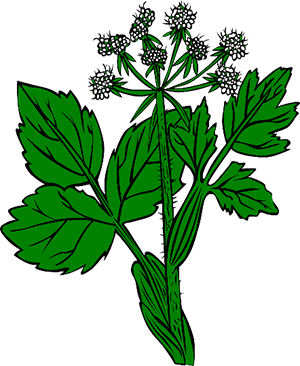
This plant thrives in shaded areas and commonly appears along roadsides, in thickets, or under power lines.
The leaves and stems contain tremetol, a fat-soluble toxin that poisons livestock that consume it. This toxin then passes into the milk of lactating animals, which led to “milk sickness” that killed thousands of settlers in the American frontier, including Abraham Lincoln’s mother.
The plant’s name derives from the mistaken belief that its roots could cure snakebites. While it has been used medicinally for generations, even medicinal use is now discouraged due to its toxicity.
Though rarely fatal to humans through direct consumption, Snakeroot is most dangerous when fresh and green. Even dried specimens retain toxicity. For animals, consuming just 1-10% of their body weight over several weeks can prove fatal.
Signs and symptoms of Milk sickness (tremetol vomiting):
Trembling
Vomiting
Severe intestinal pain
*Milk sickness can occur even without directly consuming the plant—simply by ingesting animal products from livestock that have eaten Snakeroot.
3. Pokeweed (aka Wild Parsnips/Carrots)
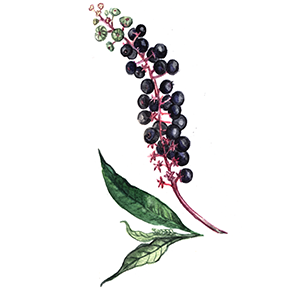 Phytolacca americana, commonly called Pokeweed, is native to eastern North America and the midwest but has spread throughout Canada, the United States, Europe, and Asia.
Phytolacca americana, commonly called Pokeweed, is native to eastern North America and the midwest but has spread throughout Canada, the United States, Europe, and Asia.
Considered a nuisance by farmers, pokeweed is toxic to humans, dogs, and livestock. What makes this plant particularly dangerous is that it’s edible in spring with proper preparation, but becomes deadly as the season progresses.
All parts contain toxic compounds—phytolaccatoxin and phytolaccigenin—with the highest concentrations found in roots, stems, and leaves. Even the berries, which look temptingly similar to edible fruits, contain enough toxins to cause serious harm.
Pokeweed can be identified by its large, fleshy white taproot (often 4-6 inches in diameter) and deep reddish-purple stems that can grow 3-7 feet tall. Whitish-green flowers consist of 5 petal-like rounded sepals growing in clusters opposite the leaves.
These flowers develop into 8-10 small, juicy berries that are flat and round. Initially light green, the berries mature to black or purple and typically hang heavily on drooping stems. Each berry contains a small, black lens-shaped seed surrounded by juice that’s an intense blood-red color.
Native Americans historically used pokeweed medicinally, and the berry juice served as a natural red dye.
Signs and symptoms of Pokeweed poisoning include:
Diarrhea (sometimes bloody)
Stomach pain
Nausea and vomiting
Weakness
Muscle spasms
Convulsions
Seizures
Headache
Heart block
Rapid pulse
Low blood pressure
Slow or difficult breathing
*Other names for Pokeweed poisoning include American nightshade poisoning, Inkberry poisoning, Pigeon Berry poisoning, Pokeberry poisoning, Scoke poisoning, Virginia poke poisoning, and Poke salad poisoning.
Treatment
Pokeweed poisoning requires immediate medical attention. In a survival situation where emergency care is unavailable, creating activated charcoal by burning wood or dense plant fiber until only carbon remains might help absorb toxins. However, this process takes hours and requires additional chemicals to be effective, making it challenging in emergency situations.
*If you or someone with you has consumed pokeweed, call poison control or proceed to the nearest emergency medical facility immediately.
4. Belladonna or Deadly Nightshade
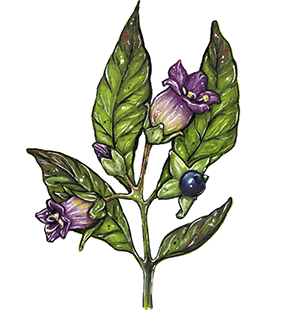 Atropa belladonna—commonly known as Belladonna or Deadly Nightshade—is a poisonous perennial herbaceous plant in the nightshade family. Found throughout Europe, Northern Africa, Western Asia, and scattered across North America, it’s considered one of the most poisonous plants known to humanity.
Atropa belladonna—commonly known as Belladonna or Deadly Nightshade—is a poisonous perennial herbaceous plant in the nightshade family. Found throughout Europe, Northern Africa, Western Asia, and scattered across North America, it’s considered one of the most poisonous plants known to humanity.
The foliage and berries contain extremely toxic tropane alkaloids. All parts of the plant are dangerous, with leaves most poisonous during budding or flowering, and roots most toxic at the end of the vegetation period.
The berries pose the greatest risk because they look appetizing and have a somewhat sweet taste that might not immediately warn of danger.
Despite its name meaning “beautiful lady” in Italian (referring to its historical use by women to dilate pupils for cosmetic purposes), Belladonna is exceptionally hazardous. The plant affects the nervous system and is poisonous to both humans and most animals.
Symptoms may include:
Dry mouth
Red, dry skin
Inability to sweat
Muscle spasms
Blurred vision
Enlarged pupils
Hallucinations
Inability to urinate
Seizures
Convulsions
Coma
Death
Belladonna derivatives are used in many over-the-counter medications to treat conditions including common cold, fever, whooping cough, earache, asthma, motion sickness, flu, joint and back pain, inflammation, and nerve issues. However, without proper dosing and medical supervision, these compounds can have serious side effects.
*If consumed, seek medical attention immediately. Activated charcoal is commonly used to remove toxins, along with supportive treatment for individual symptoms.
5. Rhododendron
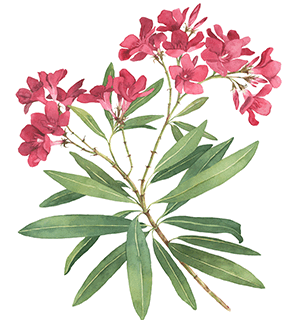 Found throughout most of the eastern and western United States, rhododendron leaves are easily mistaken for bay leaves. Using these leaves to season an emergency meal could prove disastrous.
Found throughout most of the eastern and western United States, rhododendron leaves are easily mistaken for bay leaves. Using these leaves to season an emergency meal could prove disastrous.
Rhododendrons and their close relatives, azaleas, contain grayanotoxins that cause similar types of poisoning. Honey produced from rhododendron flowers is known as “mad honey” because it can cause confusion and other neurological symptoms when consumed.
Poison control centers frequently receive calls in spring and early summer about children who have put the flowers or leaves in their mouths. While ingestion typically causes mild mouth irritation, nausea, and vomiting, severe and life-threatening poisoning can occur.
The honey derived from rhododendron flowers contains the highest concentration of grayanotoxins (also known as andromedotoxin, acetylandromedol, rhodotoxin, and asebotoxin). These neurotoxins are found throughout the Ericaceae or Heather family of plants.
Mad Honey poisoning symptoms appear from minutes to hours after ingestion and include:
Salivation
Vomiting
Circumoral paralysis (around the mouth)
Low blood pressure
Low heart rate
Loss of coordination
Progressive muscle weakness
Gastrointestinal issues
Dizziness
Loss of balance
Difficulty breathing
*Rhododendron poisoning is rarely fatal to humans, with symptoms typically resolving within 24 hours. Death is much more common among grazing animals that ingest this plant.
Treatment:
Treatment involves techniques to induce vomiting and repeated doses of activated charcoal. Seek medical attention as soon as possible if you suspect rhododendron poisoning.
Dangers Close to Home: Rhubarb Leaves
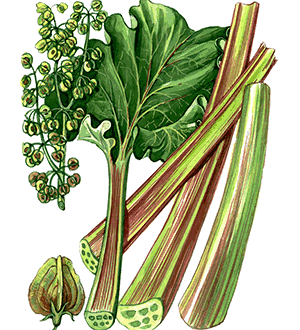 Dangerous plants aren’t only found in the wilderness—they can be growing in your own backyard. Rhubarb, for example, produces edible stalks but extremely toxic leaves. The high concentration of oxalic acid in rhubarb leaves can cause severe health problems if consumed.
Dangerous plants aren’t only found in the wilderness—they can be growing in your own backyard. Rhubarb, for example, produces edible stalks but extremely toxic leaves. The high concentration of oxalic acid in rhubarb leaves can cause severe health problems if consumed.
Rhubarb leaf poisoning can cause:
Breathing difficulty
Burning in the throat
Coma
Eye pain
Kidney stones
Nausea
Red-colored urine
Seizures
Stomach pain
Vomiting
Weakness
Conclusion
While the wilderness offers many edible plants for survival, it also harbors species that can cause serious harm or death if consumed improperly. Being able to confidently identify both safe and dangerous plants could mean the difference between life and death in a crisis situation.
Take the time to learn proper plant identification before you need these skills. Consider taking a local foraging class, studying field guides specific to your region, or connecting with experienced foragers who can provide hands-on guidance. The knowledge you gain may one day save your life or the lives of those depending on you.



















